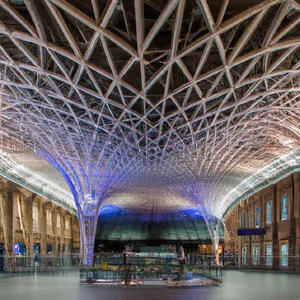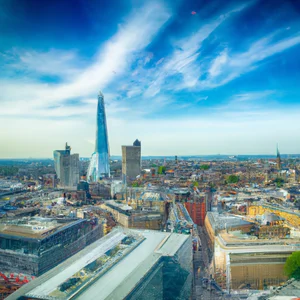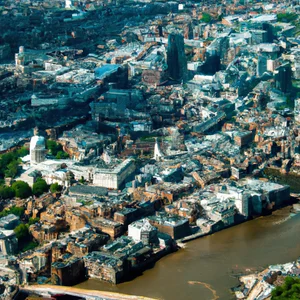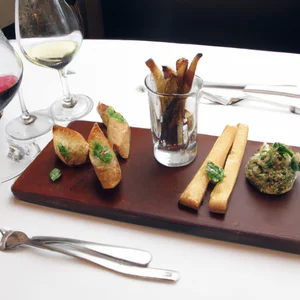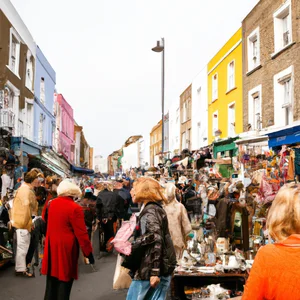Book your experience
Oxford Street: the most famous shopping in London, from Marble Arch to Tottenham Court Road
Ah, Oxford Street! It’s basically a shopping paradise in London, if you think about it. Take a look at that stretch that goes from Marble Arch to Tottenham Court Road: it’s like a continuous parade of shops, people running everywhere and windows glittering.
I remember one time I went there with a friend, and believe me, it felt like we were in the middle of a fair! There was a sea of people, and I was trying to find a pair of shoes, but in the end I got lost in the maze of shops. It’s like every store has something unique to offer, but I ended up just buying a sweater that I didn’t even know if it fit.
In fact, Oxford Street is a bit like a carousel: you get on it and get lost in the vortex of colors and sounds. It may not be the most peaceful place in the world, and sometimes you can feel overwhelmed, but there is always something that attracts you. The big chains are always there, but there are also the chic ones that you can’t find anywhere else.
I don’t know, maybe it’s the chaos that makes everything so fascinating, or maybe it’s the fact that every time you go there, there’s always some new opening or special event. I think it’s an experience that everyone should have at least once, even if you’re not a big fan of shopping. In short, it’s like a breath of fresh air in the middle of a city that never sleeps.
So if you ever come across us, prepare to be surprised. Of course, bring comfortable shoes and a little patience, because between one shop and another you might also discover a nice place to stop for something to eat. And who knows, maybe you’ll come home with an unexpected souvenir!
From Marble Arch: Start of your adventure
I vividly remember my first step up Oxford Street, starting from Marble Arch, with the iconic arch towering before me like a beacon of possibility. The air was full of energy; the rustling of bags, the scent of fresh coffee and the sound of passing trams created a unique melody, a symphony of urban life. There is no better way to start your shopping adventure than from this crucial point, where history and modernity intertwine.
A practical and engaging journey
Marble Arch is easily accessible by subway, thanks to the stop of the same name on the Central Line. Once you arrive, take a moment to admire the monument itself; originally built as the entrance to Buckingham Palace, it now serves as the gateway to one of the world’s most famous shopping streets.
Don’t forget to explore the small alleys that branch off from the arch: these hidden corners offer unique ideas and independent shops that tell stories of local craftsmanship. An insider tip? Look for The Marble Arch Mound, a temporary attraction that offers panoramic views of the city and a perfect photo opportunity.
A piece of history in every step
Oxford Street has a fascinating history dating back to Roman times, but it was in the 18th century that it began to transform into a shopping centre. The street has hosted shops of all kinds, from tailors to department stores, becoming a symbol of British commerce. Each shop along the street tells a part of this evolution, making each step a journey through time.
An approach to sustainability
In an age where sustainability is key, it’s important to think about how your shopping can make an impact. Many shops along Oxford Street are adopting more responsible practices, such as using recycled materials and promoting ethical brands. Choosing to support these shops not only enriches your experience, but also contributes to a more sustainable future for London.
An activity not to be missed
For a truly special experience, book a visit to Selfridges, one of the most iconic department stores in the world. Not only will you be able to explore a wide range of brands, but I recommend visiting their famous food hall, where you can savor a selection of global culinary delights. Each bite tells a story of culinary traditions and innovation.
Myths and misconceptions
A common misconception is that Oxford Street is only for fast fashion and big brands. In reality, the street is a microcosm of diversity and culture, full of independent boutiques and vintage shops just waiting to be discovered. Take your time and get lost among the shops, you will be surprised by what you find.
A personal reflection
As you walk along Oxford Street, with the noise of traffic and the voices of passers-by surrounding you, ask yourself: What does shopping mean to me? Is it just a consumerist act or can it be an experience that celebrates culture and community? The street is not just a place to shop, but a living stage where every visitor has the opportunity to write their own story.
Get ready to discover, explore and, above all, have fun as you begin your Oxford Street adventure!
Discover the iconic shops of Oxford Street
Walking along Oxford Street, with its incessant comings and goings of people and vibrant mix of colors and sounds, I remember my first visit to London. It was a sunny afternoon and, armed with a map and a good dose of curiosity, I ventured into what is known as the most famous shopping street in Europe. Every window seemed to tell a story, and every shop was an invitation to discover the world of fashion, beauty and the art of living.
An unparalleled shopping experience
Oxford Street, with its over 300 shops, offers a shopping experience that goes far beyond simply purchasing products. Iconic brands such as Selfridges, a department store with a history dating back to 1909, and emerging designer boutiques are found here, making every visit an opportunity to find that one-of-a-kind piece that tells who you are. Don’t forget to explore beauty shops like Lush and The Body Shop, which offer sustainable and cruelty-free products, perfect for the discerning consumer.
An insider tip
If you want a unique shopping experience, I recommend visiting the stores during the week, avoiding the weekend. The crowds are significantly smaller and you can enjoy a quieter stroll, exploring hidden corners and discovering new boutiques. And don’t forget to ask the staff for help: many stores offer personalized consultations, a perfect way to discover new styles.
A piece of history
Oxford Street isn’t just a shopper’s paradise; it is also a place rich in history. In the past, this road was an important Roman communication route and in the 18th century it became a center of trade. Today, walking along Oxford Street is like walking through centuries of urban evolution, with historic buildings mixing with new avant-garde structures.
Sustainability and responsibility
In an age where sustainability is key, many Oxford Street shops are adopting more responsible practices. Brands like Reformation and Everlane offer sustainable fashion, while stores like Oxfam sell second-hand clothing, helping to reduce your environmental impact. Choosing to buy in these stores is not only an act of style, but also a step towards a greener future.
Soak up the atmosphere
Imagine walking along this street, the scent of coffee shops mixing with the crisp air, while the sounds of street performers create a lively background. Every corner offers a new stimulus, an invitation to explore and let yourself be surprised.
Try the experience of a pop-up store
To add a touch of novelty to your visit, look for a pop-up store. These pop-up shops often house one-of-a-kind items, from artisanal shoes to handmade jewelry. They’re a great way to discover new brands and support small businesses local.
Myths to dispel
A common misconception is that Oxford Street is only for those on an unlimited budget. In fact, there are many options for every price range. From fast fashion shops to vintage shops, you can find treasures without emptying your wallet.
A final reflection
At this vibrant crossroads of cultures and styles, we reflect on how the way we shop can influence the world around us. Next time you stroll down Oxford Street, ask yourself, “What impact do my purchasing choices have on the community and the environment?” This simple question could change your approach to shopping and transform a simple visit into inspiration for more conscious consumption.
Tips for sustainable shopping
Walking along Oxford Street, the rush of traffic and the buzz of passers-by may seem overwhelming, but there is a corner of tranquility on this lively London street that few people know about: Holy Trinity Church. During one of my visits, I found myself participating in a small eco-market initiative organized within the church itself, where local artisans displayed products made from recycled materials. This event not only enriched my shopping experience, but also sparked a deeper awareness in me about the importance of purchasing sustainably.
Conscious purchasing: where to start
When it comes to sustainable shopping on Oxford Street, it’s essential to know where to direct your steps. Some stores that stand out for their commitment to responsible practices include:
- People Tree: pioneers of ethical fashion, offering clothing made with organic materials and fair trade practices.
- The White Company: for those looking for sustainable home items, this shop offers products in organic cotton and natural fabrics.
- Lush: Known for its fresh, handmade cosmetics, Lush is committed to sustainable manufacturing practices and uses natural ingredients.
An insider tip
A little secret that only the locals know is the London Waste and Recycling Board, which organizes swap and repair events. Attending one of these events will not only allow you to give new life to old objects, but also meet people with similar interests and learn creative reuse techniques.
Historical and cultural impact
The idea of sustainable shopping isn’t just a modern trend; is rooted in the history of Oxford Street, which has always been a place of commercial innovation. Over the years, consumers have evolved their expectations, pushing stores to think about how their practices affect the environment. Today, growing demand for ethical and sustainable products is reshaping the retail landscape, turning Oxford Street into an example of how retail can evolve responsibly.
Responsible tourism practices
When exploring Oxford Street, consider using sustainable transport such as the tube or rental bikes. Furthermore, many shops offer discounts to those who bring their own reusable bags, encouraging conscious choices and reducing the use of plastic.
An experience worth trying
For an unforgettable experience, take part in a sustainable shopping tour led by local experts, who will take you to discover lesser-known shops and markets, but full of stories and unique products. This is a perfect opportunity to mix business with pleasure, exploring the city while shopping responsibly.
Myths to dispel
A common misconception is that sustainable shopping is always expensive. In fact, there are many accessible options, such as local markets and second-hand shops, where you can find unique pieces at great prices. Plus, investing in quality items means they last longer, reducing the need for frequent purchases.
Final reflection
As you immerse yourself in the atmosphere of Oxford Street, ask yourself: how can my purchasing choices reflect my values? Every purchase can be an opportunity to make a difference, a step towards a more sustainable future. Whether you’re a fashion lover, an art enthusiast or simply a curious explorer, Oxford Street offers a world of possibilities – you just need to look beyond the surface.
Culture and history: Oxford Street’s past
Imagine strolling along Oxford Street, surrounded by the buzz of the city, as the scent of fresh coffee and pastries mixes with the crisp London air. My first visit to this iconic shopping thoroughfare was a journey back in time, when I came across a small commemorative plaque telling of the historic Oxford Street as the main thoroughfare for pilgrims in the Middle Ages. This simple encounter sparked a curiosity in me that transformed the way I see this vibrant area.
A little history
Oxford Street isn’t just a shopper’s paradise; it is a place steeped in history and culture. Originally called the “Oxford Road”, the road was part of the route from London to Oxford. As the centuries passed, it became a hub of commercial and social activity. Today, with over 300 shops, it is one of the busiest streets in Europe. But don’t be fooled by its modernity: many buildings date back to the 18th and 19th centuries, bearing witness to an era of great elegance. The famous Selfridges, opened in 1909, revolutionized the concept of the department store, introducing the concept of the “shopping experience” we know today.
An insider tip
Here’s a little-known trick: As you browse the shops, take a moment to look at the architectural details of the buildings. Some have frescoes and decorations that tell forgotten stories of London. A fascinating example is the Dunhill clothing store, which houses a delightful internal garden, a corner of tranquility in the beating heart of commerce.
The cultural impact
Oxford Street culture is a reflection of London’s diversity. Here you can find global brands alongside local boutiques, all in a context that celebrates innovation and creativity. This street is not only the ideal place to shop, but is also a stage for cultural events that attract visitors from all over the world, contributing to a collective narrative that spans the past and the present.
Sustainable tourism
In an age where sustainability is more important than ever, many of Oxford Street’s boutiques are embracing responsible practices. Brands like People Tree and Reformation are dedicated to eco-friendly materials and fair production methods. Choosing to purchase from these stores not only enriches your shopping experience, but also supports a movement towards a more sustainable future.
An activity not to be missed
For a unique experience, I recommend you visit the Museum of London, a few steps from Oxford Street. Here you can discover the history of the city through interactive exhibitions and fascinating exhibits. It’s an ideal way to understand the cultural context in which Oxford Street fits.
Myths and misconceptions
A common misconception is that Oxford Street is only for shopping. In fact, many overlook the countless opportunities to explore local art and history. Don’t just walk around with grocery bags; take the time to savor the atmosphere and immerse yourself in the history that surrounds you.
In conclusion, as you stroll along Oxford Street, ask yourself: what stories lie behind the shop fronts and historic buildings? Every step is an opportunity to connect with a rich and vibrant past, while experiencing the frenetic present of one of the most iconic streets in the world.
The best coffee breaks along the route
When I embarked on my first stroll along Oxford Street, I couldn’t imagine that my adventure would be peppered with memorable coffee breaks. The frenzy of London’s most famous shopping street is interrupted by welcoming corners, where the scent of freshly roasted coffee mixes with the sound of chatter. One of these breaks turned into an experience I will always remember: a little café called Flat White, where I savored a perfect cappuccino, served with delicate foam art. Sitting at the table, I listened to the stories of travelers and locals, discovering that every cup of coffee has its own story to tell.
Coffee not to be missed
If you’re looking for the best coffee breaks along Oxford Street, here are some gems you can’t miss:
- Kaffeine: This Australian cafe is famous for its filtered coffee and artisanal cakes. It’s a great place to recharge your batteries before continuing your day of shopping.
- The Espresso Room: An intimate corner where coffee lovers can enjoy selected blends from small producers. Don’t forget to try their homemade treats!
- Caffè Nero: With several locations along Oxford Street, it’s a handy choice for a quick break. They also offer organic and sustainable coffee options.
An insider tip
If you want a unique experience, try visiting Café Royal, located nearby. This historic café has an atmosphere reminiscent of times gone by and offers an afternoon tea set that is a real journey back in time. It’s a place where culture and history intertwine, making every sip of tea a work of art.
The cultural impact of coffee on Oxford Street
Coffee is not just a drink; it is a symbol of socialization and cultural exchange. Historically, London cafés have been centers of debate and innovation. Today, as tourists and locals flock to these cafés, a social fabric continues to be built that reflects the diversity and vibrancy of the British capital.
Responsible tourism practices
Choosing coffees that use organic and fair-trade coffee beans is one way to support sustainable practices. Many cafes along Oxford Street are committed to reducing their environmental impact, using recyclable materials and contributing to local initiatives.
An unmissable activity
After a good coffee, why not take a walk in Regent’s Park? Located a short distance away, it is the perfect place to relax and enjoy nature, before returning to the bustling shopping of Oxford Street.
Myths to dispel
A common misconception is that coffee breaks are only for tourists. In fact, many locals take the time to stop and enjoy a good coffee, making each coffee shop a microcosm of London life.
In conclusion, next time you find yourself along Oxford Street, take a moment to reflect on how special a simple coffee break can be. Have you ever wondered what stories hide behind every cup you sip?
Explore hidden and alternative markets
When I set foot in London’s alternative markets for the first time, my idea of shopping completely transformed. It was no longer just about buying objects, but about discovering local stories, cultures and talents. I still remember the thrill of wandering around a small market a few steps from Oxford Street, where an artisan told me the story behind each unique piece on display. These personal experiences make every visit to London an unforgettable adventure.
London’s hidden treasures
Despite Oxford Street’s reputation as one of the busiest shopping streets in the world, London offers a myriad of alternative markets worth exploring. One of the most famous is the Brick Lane Market, open on Sundays and easily reachable by tube. Here you’ll find a variety of stalls selling everything from vintage clothes to local artwork. Another jewel is the Camden Market, famous for its eclectic atmosphere and numerous gastronomic offerings.
For a more intimate experience, don’t miss Borough Market, where local producers offer fresh produce and culinary specialties. This market is not just a place to buy, but a real center of gastronomic culture. Be sure to try a taste of artisanal cheeses or street food from different parts of the world.
Insider tips
A little-known tip is to visit the Southbank Center Market, which takes place every Friday and Saturday. This market is less crowded than the more famous ones and offers a selection of local artisans and gourmet foods. It’s the perfect place to discover new talent and enjoy unique dishes, all with spectacular views of the River Thames.
A significant cultural impact
These markets not only offer an alternative to traditional shopping, but are also a reflection of London’s cultural diversity. They are spaces where artists and creators can express their identities and share their stories, thus contributing to a rich and varied social fabric. Furthermore, many of these markets promote sustainable tourism practices, encouraging the purchase of local and artisanal products, reducing the environmental impact linked to consumerism.
Immerse yourself in the local atmosphere
Walking through the stalls of a market is a sensory experience: the vibrant colors of the objects on sale, the scents of cooking food, the sound of laughter and conversations that fill the air. Every corner offers something new to discover, making each visit unique and memorable.
An offer not to be missed
I recommend stopping by Southbank Centre and attending a local craft workshop, where you can learn how to make your own personalized souvenir. It’s a fantastic way to bring home a piece of London that you’ve created yourself.
Dispelling the myths
A common misconception is that alternative markets are only for young people or those looking for quirky items. In reality, these spaces are for everyone, offering a range of products ranging from vintage to modern, from gastronomic to artisanal. There is something for every taste and age.
In conclusion, next time you find yourself on Oxford Street, take a moment to step away from the hustle and bustle and immerse yourself in London’s hidden markets. It will invite you to reflect: how important is authenticity to you in your travel experience?
Night shopping: a unique experience
I remember the first time I decided to explore Oxford Street at night. The twinkling lights of the shops, the vibrant sounds of music wafting through the air and the buzzing atmosphere of excitement created a completely different experience than on the day. As I walked among the illuminated shop windows, I felt surrounded by a sort of magic that made every shop, every corner, an adventure to discover.
A different lighting
Night time shopping on Oxford Street isn’t just an option, it’s a sensory experience. Stores stay open late, with many iconic brands offering special promotions and exclusive events. According to the official Oxford Street website, many stores, such as Zara, Topshop and H&M, stay open until 9pm or later on weekends. This is the ideal time to escape the crowds of the day and immerse yourself in a more relaxed environment.
An insider tip
A little-known trick? Visit the emerging design shops in Soho, a short walk from Oxford Street. Here you can find unique boutiques and local craftsmanship, away from the frenzy of mainstream brands. One of my favorite places is The Shop on Oxford, where you can discover local artists and limited edition collections. They also often offer launch events which can include refreshments and live music.
A journey through history
Oxford Street isn’t just a shopping paradise; It has a rich history dating back to the Roman period. Originally a Roman road, it became an important trading center in the 18th century. Its development as a shopping destination has profoundly influenced London culture, making it one of the most famous streets in the world. The transformation from a mere gateway to an epicenter of fashion and trends is a tale that continues to evolve.
Sustainability and shopping
In this context of night shopping, it is important to consider sustainable practices. Some shops on Oxford Street are adopting eco-friendly initiatives, such as using recycled materials and supporting local brands. For example, the Reformation brand is known for its environmental awareness and offers products that are not only fashionable, but also sustainable. Choosing to shop in stores that embrace sustainability is one way to contribute to a greener future.
An unmissable activity
If you want a truly unique experience, take part in a guided evening shopping tour. These tours will not only take you to the best shops, but will also give you the opportunity to discover stories and curiosities about Oxford Street. It’s a fun and informative way to explore the area in a new light.
Myths and misconceptions
A common misconception is that night shopping is only for tourists or those looking for great deals. In reality, many Londoners prefer to go shopping after work, taking advantage of the extended opening hours to avoid the crowds of the day. This makes the experience more authentic and relaxed.
Final reflections
After experiencing the atmosphere of Oxford Street at night, I can’t help but wonder: what stories are hidden behind each shop and window? The next time I go there, I will make an effort to discover not only the latest trends, but also the stories that make this street so lively and fascinating.
Local restaurants to try nearby
Walking along Oxford Street, between one shop and another, you can easily let yourself be carried away by the frenetic energy and bright colors of the street. But what happens when your shopping experience meets local gastronomy? Some of London’s best restaurants are within walking distance of this famous thoroughfare, offering a perfect opportunity to refuel and enjoy dishes that tell stories as much as the shops themselves.
A personal anecdote
I remember one of my first visits to Oxford Street: after hours of exploration, I found myself in a restaurant called “Dishoom”, a place that evokes the atmosphere of the historic coffee shops of Bombay. Between the scent of spices and the chatter of the diners, I realized that cooking can be just as addictive as shopping. A plate of biryani and a nice chai were the perfect end to a day of exploration.
Unmissable restaurants
Here are some local restaurants you can’t miss:
- Dishoom: A tribute to Indian cafes, offering an immersive dining experience with authentic dishes.
- Flat Iron: If you are a meat lover, this restaurant offers delicious cuts at affordable prices, in a welcoming environment.
- Hoppers: Specializing in Sri Lankan cuisine, the place is famous for its hoppers and curries, perfect for a meal full of flavours.
An insider tip
If you want to avoid long waits, book a table in the most famous restaurants, but don’t forget to explore the small hidden gems too. One of the best kept secrets is “The Palomar”, an Israeli restaurant that serves delicious dishes in a lively atmosphere. Often, smaller places offer unique dining experiences away from the crowds.
Cultural and historical impact
London’s gastronomy is a reflection of its cultural diversity. Restaurants like Dishoom not only bring the flavors of distant lands, but also tell stories of migrations and cultural fusions that have shaped the city. This aspect enriches the shopping experience on Oxford Street, creating a link between the consumption of goods and that of culinary experiences.
Sustainability and responsibility
Many local restaurants are committing to more sustainable practices, using locally sourced ingredients and opting for eco-friendly packaging. Choosing to eat in restaurants that care about their environmental impact is not only a responsible gesture, but also contributes to a stronger and more aware community.
An experience worth trying
After a day of shopping, why not attend a cooking workshop at one of the local restaurants? Some offer courses to learn how to prepare typical dishes, a fantastic way to immerse yourself in London’s food culture.
Myths to dispel
A common misconception is that restaurants near tourist areas are always expensive and of low quality. In fact, many places offer delicious dishes at reasonable prices. Experiencing local cuisine doesn’t have to empty your wallet.
Final reflection
As you explore Oxford Street, remember that each restaurant you choose to visit has its own story to tell. What flavors and stories will you take home after your adventure? The true essence of the city is not only found in the shops, but also in the dishes we taste along the way.
Events and festivals: experience it like a local
I vividly remember a September afternoon on Oxford Street, when, walking among the shops, I came across one of the end-of-summer celebrations that enliven the area. It was as if the street itself had been transformed into a stage: street musicians, artists and stalls offering ethnic food, all gathered in a festive atmosphere that seemed to envelop every passerby. It is in moments like these that Oxford Street reveals itself not just as a place for shopping, but as a true cultural centre pulsating with life.
A calendar to mark
Oxford Street hosts events and festivals all year round, from Christmas markets that enchant with their twinkling lights to summer festivals dedicated to art and music. You can check out Westminster’s official website or follow local event social pages to stay up to date on upcoming events. For example, the famous Oxford Street Christmas Lights is a tradition that attracts visitors from all over the world, with a spectacular switch-on marking the start of the holidays.
An insider tip
If you want to experience the festive atmosphere like a real local, try to participate in neighborhood events such as London Fashion Week or Notting Hill Carnival, which although not taking place directly on Oxford Street, have a significant influence on the atmosphere of the area is significant. During these events, many stores offer special discounts and promotions, allowing you to shop at great prices while enjoying the lively atmosphere.
A significant cultural impact
These festivals not only enrich the shopping experience, but also reflect London’s cultural diversity. Oxford Street, as the city’s main thoroughfare, represents a melting pot of cultures and traditions. The street’s history is intertwined with the evolution of London, from its origins as a market street in the medieval era to becoming a symbol of modern commerce today.
Sustainability and community
In an age where sustainable tourism is increasingly important, many local events promote responsible practices. For example, the London Vegan Festival is often held in the area, celebrating a sustainable lifestyle and encouraging the use of eco-friendly products. Participating in these events not only enriches your experience, but also supports local initiatives and the sustainable economy.
An experience not to be missed
Don’t forget to check out the events happening during your visit. I recommend you visit the Southbank Centre, where side events are often held which can enrich your shopping experience on Oxford Street. You’ll find yourself immersed in a vibrant atmosphere and may even discover emerging artists or delicious food to enjoy.
Myths and misconceptions
A common misconception is that Oxford Street is just a place for shopping. In fact, the street is a cultural meeting point where you can enjoy art, music and gastronomy, all in one place. Don’t let the frenzy of commerce deter you from exploring the many cultural offerings the area has to offer.
A personal reflection
After experiencing one of these celebrations, I realized that Oxford Street is much more than just a shopping destination: it is a microcosm of London life, where every visit can bring surprises and new discoveries. I invite you to consider what makes your travel experience unique: will it be the store you visit or the unexpected event you attend?
Fun facts about Oxford Street you didn’t know
The first time I stepped onto Oxford Street, I felt overwhelmed by the vibrancy and energy that permeates this iconic London thoroughfare. As I walked among the glittering shop windows and tourists intent on taking photos, I noticed a small, almost invisible sign posted on one of the facades of the historic shops. It was a reminder of a not so distant past, when this road was a simple country lane. It was in that moment that I realized how rich in stories and curiosities this street was, which is not only the beating heart of London shopping, but also a place steeped in culture and history.
The hidden history of Oxford Street
Not many people know that Oxford Street was originally an ancient Roman path known as “Via Trinobantina”. Only in the 18th century did it begin to transform into a commercial street, becoming one of the most famous in the world. Today, with over 300 shops, it is a paradise for shoppers, but its history is rooted in a fascinating past. From selfridges, the famous department store opened in 1909, to historic boutiques that date back centuries, every corner tells a part of London’s history.
An insider tip
A tip that few people know concerns a small passage called St. Christopher’s Place, easily overlooked by the frenzy of Oxford Street. This picturesque alleyway, hidden behind Selfridges, is a lovely place for a break from shopping. Here you will find cozy cafes and restaurants offering delicious dishes in a relaxed atmosphere. It’s the ideal place to discover authentic London cuisine and take a break before returning to your shopping adventure.
Cultural impact and sustainable practices
Over the years, Oxford Street has undergone significant changes, both architecturally and culturally. However, growing environmental awareness has led to an interest in sustainable shopping practices, such as purchasing local products and participating in initiatives such as the Green Retail Initiative. Many stores now offer eco-friendly options, allowing visitors to shop responsibly.
An experience not to be missed
If you are looking for a truly unique experience, I recommend taking part in one of the themed guided tours organized by local experts, which tell not only the history of Oxford Street, but also its most surprising curiosities. Discovering how this street has evolved over time and learning about the famous people who frequented it will certainly enrich your visit.
Myths and misconceptions
One of the most common myths about Oxford Street is that it is only for tourism. In reality, it is a lively and vibrant thoroughfare where Londoners go daily to shop, eat and socialise. Its diversity offers an authentic experience that goes far beyond simple shopping.
In conclusion, next time you find yourself on Oxford Street, take a moment to observe not only the glittering shop windows, but also the history and culture that hides around every corner. What is the most surprising curiosity you have discovered during your adventures?

 Architecture and Design
Architecture and Design Cities and Regions
Cities and Regions Culture and History
Culture and History Events and Festivals
Events and Festivals Fashion and Shopping
Fashion and Shopping Food and Wine
Food and Wine Nature and Adventure
Nature and Adventure Unique Experiences
Unique Experiences



















